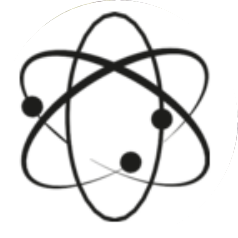共用题干 第一篇How the First Stars in the Universe Came into ExistenceResearchers believe that our universe began with the Big Bang(宇宙大爆炸)about 13 billion years ago,and that soon after that event,matter began to form as small dust grains and gases.How the first stars formed from this dust and gas has been a burning question for years,but a state-of-the-art computer simula- tion now offers the most detailed picture yet of how these first stars in the universe came into existence.The composition of the early universe was quite different from that of today,and the physics that governed the early universe were also somewhat simpler. Dr. Naoki Yoshida and colleagues in Japan and the U.S.incorporated these conditions of the early universe,sometimes referred to as the"cosmic dark ages",to simulate the formation of an astronomical object that would eventually shine its light into this darkness.The result is a detailed description of the formation of a protostar(原恒星)一the early stage of a mas- sive primordial(原始的)star of our universe , and the researchers ' computer simulation , which has been called a"cosmic Rosetta Stone"sets the bar for further investigation into the star formation process.The ques- tion of how the first stars evolved is so important because their formations and eventual explosions providedthe seeds for subsequent stars to come into being.According to their simulation,gravity acted on minute density variations in matter,gases,and the myste- riou;"dark matter"of the universe after the Big Bang in order to form this early stage of a star一a protostarwith a mass of just one percent of our sun. The simulation reveals how pre-stellar(前恒星的)gases would have actually evolved under the simpler physics of the early universe to form this protostar.Dr. Yoshida's simulation also shows that the protostar would likely evolve into a massive star capable ofsynthesizing(合成)heavy elements,not just in later generations of stars,but soon after the Big Bang."This general picture of star formation,and the ability to compare how stellar objects form in different time periods and regions of the universe,will eventually allow investigation into the origins of life and planets,"said Lars Herriquist,a professor of Astronomy at Harvard University and a co-author of this latest report."The abundance of elements in the universe has increased as stars have accumulated,"he says,"and the formation and destruction of stars continues to spread these elements further across the universe.So all ofthe elements in our bOdies originally formed from nuclear reactions in the centers of stars,long ago."Their simulation of the birth of a protostar in the early universe signifies a key step toward the ambitiousgoal of piecing together the formation of an entire primordial star and of predicting the mass and properties of these first stars of the universe.More powerful computers,more physical data,and an even larger range will be needed for further calculations and simulations,but these researchers hope to eventually extend this simu- lation to the point of nuclear reaction initiation一when a stellar object becomes a true star."Dr. Yoshida has taken the study of primordial star formation to a new level with this simulation,but it still gets us only to the halfway point towards our final goal.It is like laying the foundation of a skyscraper," said Volker Bromm,assistant professor of Astronomy at the University of Texas, Austin and the author of a companion article."We must continue our studies in this area to understand how the initially tiny protostar grows,layer by layer,to eventually form a massive star. But here,the physics become much more complicated and even more computational resources are needed." According to the first two paragraphs,the early universe_______.
A.was governed by simpler physics B.got fewer stars shinning in it C.started over 13 billion years ago D.was composed in a way similar to that of today正确答案A


